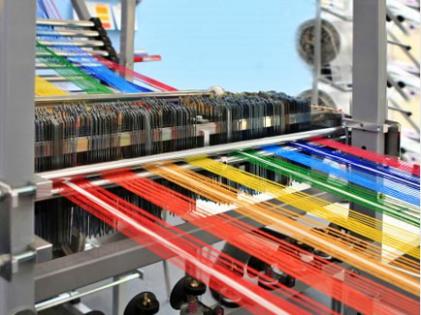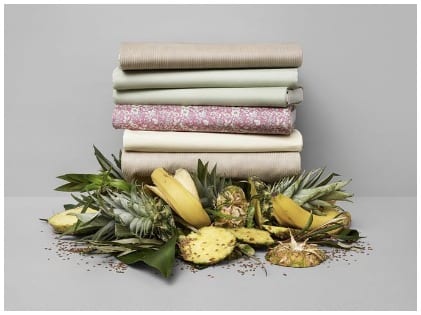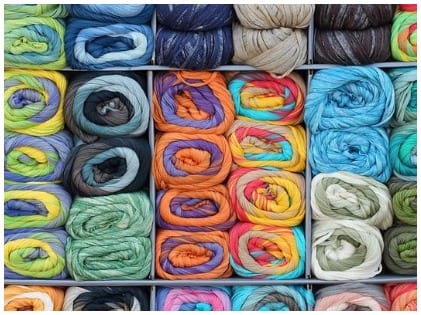The fashion and textile industry uses the very same limited fabrics are using for several centuries. In recent years, new developments and fabrics other than cotton, silk, leather, and wool are now making their way to the stage and the shop shelves. This is partly owing to the enormous strain that the industry is placed under thanks to the surge in demand for clothing with a growing population.
The limited resources forced many to look elsewhere for means to produce garments. On the other hand, there is also growing environmental consciousness, leading many pioneers in the industry to look for more sustainable sources for fabric production.
The Problem With Fabric Production
 The sustainability of the fabric production industry is in question on numerous grounds. Particularly in cotton production, there are numerous environmental effects. This includes soil erosion, water contamination, and land degradation.
The sustainability of the fabric production industry is in question on numerous grounds. Particularly in cotton production, there are numerous environmental effects. This includes soil erosion, water contamination, and land degradation.
This is because of pesticides and the fact that it requires 20, 000 liters of water to produce only a kilogram of cotton. All this is good enough to produce only one piece of t-shirt. Synthetic fabrics are also notorious in the industry for their negative environmental impact. That’s because they are carcinogenic. It produces ethylene glycol and terephthalic acid in its production process. This is without mentioning the hundreds of thousands of tiny plastic microfibers that pollute the water system. This is with every wash of items of clothing made from these fabrics, like acrylic and polyester. And that is just the tip of the iceberg. Aren’t you glad for the new revolution in the industry?
Fabrics From Food
Some very clever folks have gotten together to formulate means of producing fabric from a variety of food waste, algae, recycled resources, and regenerate cellulose. This is the future of the fabric industry, and it sure is interesting! The most exciting movement n the sustainable fashion industry is arguably that of using agricultural waste, as essentially it is hitting two birds with one stone. The fabrics produced from agricultural waste are natural, resourceful fibers for the clothing industry, and also a solution for wastage. The five companies that have capitalized on their innovations are as follows:
Pinatex
 This is a product of one of the most famous fruit-based vegan leather companies in the sustainable market, with their fabrics produced from pineapple leaf fibers. The company uses the part of the fruit. That is typically inedible and goes to waste. However, it can come handy as a resource for the production of cruelty-free, natural clothes, bags, and shoes. The company behind Pinatex is Ananas Anam, founded by Dr. Carmen Hijosa. They are working on upping their sustainability factor by using a bio-based resin instead of PU and using metallic pigments produced from minerals.
This is a product of one of the most famous fruit-based vegan leather companies in the sustainable market, with their fabrics produced from pineapple leaf fibers. The company uses the part of the fruit. That is typically inedible and goes to waste. However, it can come handy as a resource for the production of cruelty-free, natural clothes, bags, and shoes. The company behind Pinatex is Ananas Anam, founded by Dr. Carmen Hijosa. They are working on upping their sustainability factor by using a bio-based resin instead of PU and using metallic pigments produced from minerals.
Orange Fiber
In Italy, some 700, 000 tons of orange peel go to waste in the juice production industry every year. Orange Fiber provided great use for this waste by transforming the orange peels into a silky soft fabric that id ideal for the clothing industry. It is a patented material that is very similar to viscose.
They produce it from the cellulose in the fruit peel. You can blend it with cotton and silk but doesn’t involve any cutting down of trees in its production! It’s an Italian Luxury brand with a premium finish and a collection by the designer Salvatore Ferragamo.
Parblex
This is a bioplastic that is a natural and sustainable alternative for the production of fastenings, buttons, and accessories. The Parblex features an attractive textured finish and is available in three colors: snow, smoke, and tortoiseshell. Their waste comes mostly from McCain, the food company.
And the company that produces it has a zero-waste production process. Even the offcuts from the Parblex production comes into the process. The bioplastic is made from potato waste, making potatoes a great resource in the fashion market!
Vegeatextile
 Another fantastic fruit-byproduct that has become a leather alternative is made by the Vegea company, who produce a leather form the discards of the winemaking process. The discards include the skins, seeds, and stems of the grapes. The resulting ‘leather is wine hued and beautiful and doesn’t require toxic tanning procedures. Vegea has been funded by the EU to continue its research and development in sustainable fabrics.
Another fantastic fruit-byproduct that has become a leather alternative is made by the Vegea company, who produce a leather form the discards of the winemaking process. The discards include the skins, seeds, and stems of the grapes. The resulting ‘leather is wine hued and beautiful and doesn’t require toxic tanning procedures. Vegea has been funded by the EU to continue its research and development in sustainable fabrics.
There are many more brands that we did not mention but are pioneering in the industry. They are creating sustainable solutions to the growing clothing industry. These companies are doing their best to limit their negative effect on the environment. Of course, you will never look at food the same way again. That’s because it’s more versatile than you thought!




